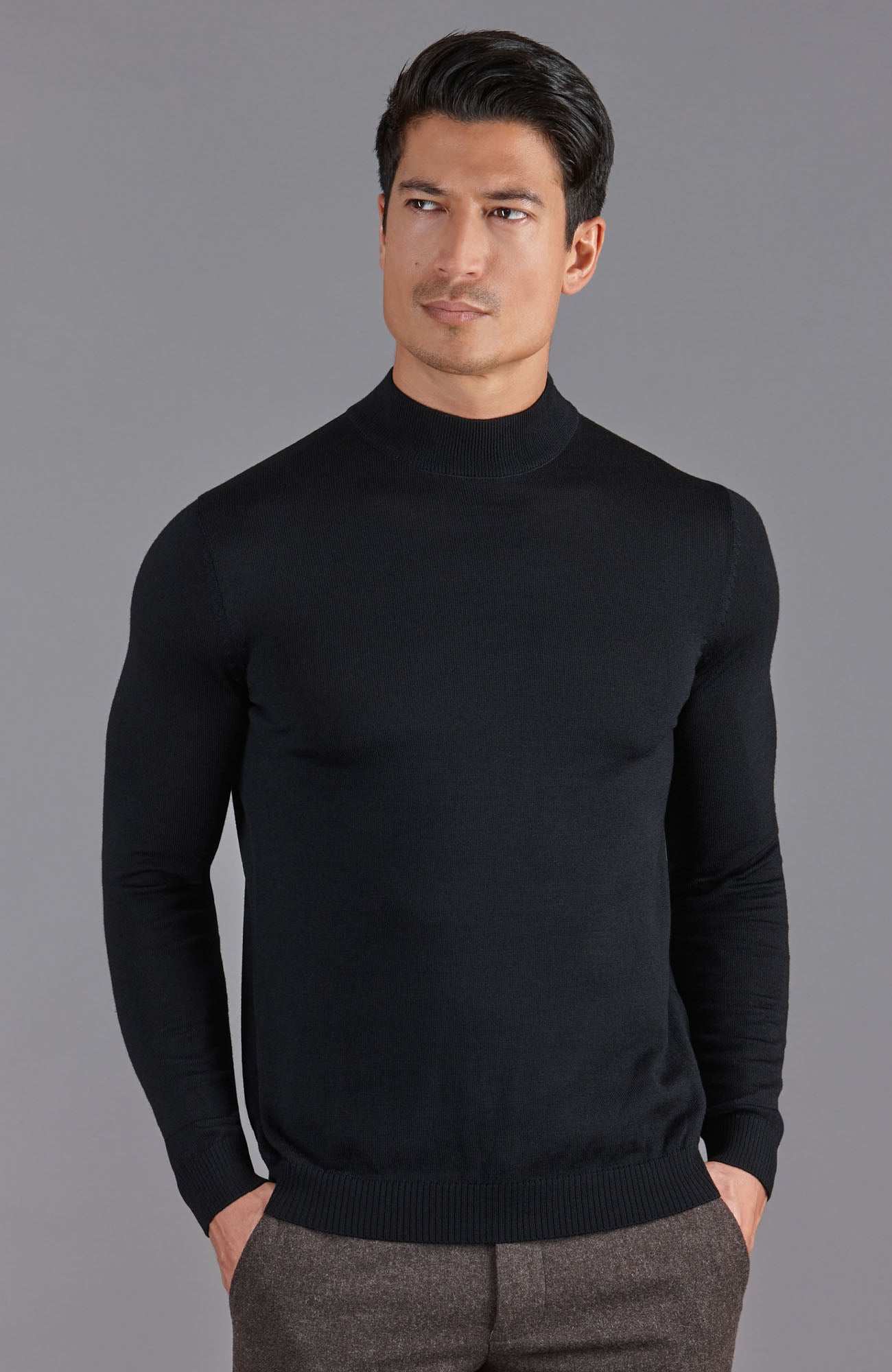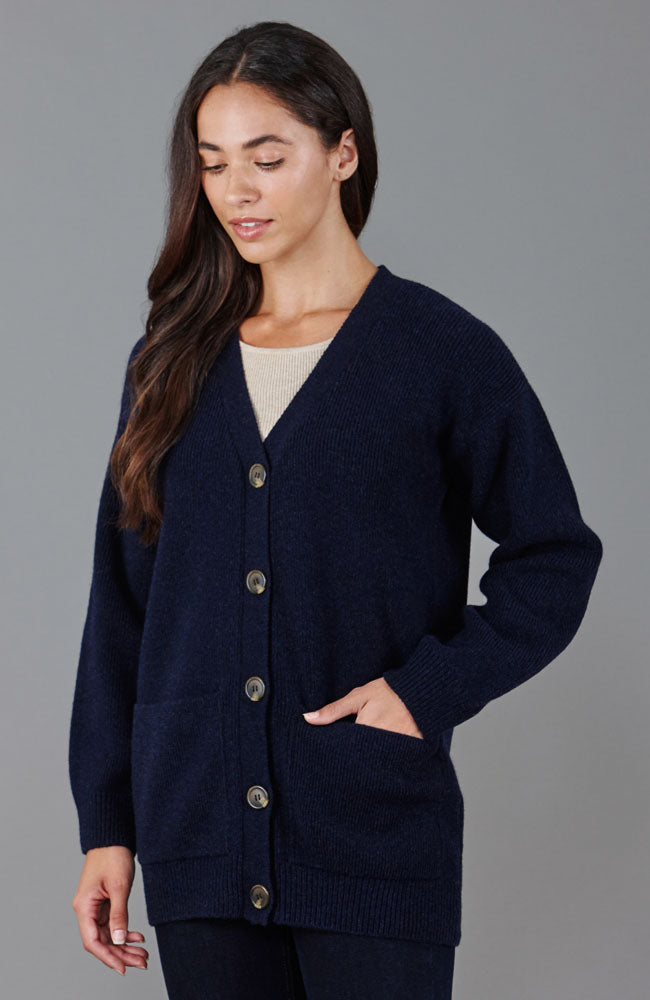Paul James Knitwear x Todd & Duncan Cashmere (Est. 1867)

Todd & Duncan (Est. 1867) – The History
Based in the Scottish Highlands and established in 1867, long-time industry favourite for cashmere production, Todd & Duncan have become a household name, synonymous with luxury and lavishness.
Their story began with Bradford-born Joseph Dawson, who on a working trip to India, saw the locals carding and spinning cashmere by hand and saw an opportunity to introduce technology to the process, thus making it more cost efficient and less labour intensive.
Located in the picturesque Loch Leven, thirty miles north of Edinburgh, the Todd & Duncan estate is a crucial point in history for all those involved in the knitwear industry. After relocating mills in 1906 after a devastating fire destroyed their original site in Alva, Clackmannanshire, Loch Leven was soon to become the central hub of cashmere production within the United Kingdom.

Woolly Fact: Following her surrender to Protestant nobles, Mary Queen of Scots was imprisoned in Loch Leven Castle throughout 1567.
Thanks to their vast, idyllic location, Todd & Duncan can utilise the immense body of water used in production by processing and filtering it back into the historic Loch, providing safe housing to its inhabiting wildlife. With the production of fashion and textiles sitting in the top bracket of those industries most responsible for pollution, it is important to recognise the companies that are acting against damaging processes and thinking of viable solutions. That’s why here at Paul James Knitwear, we’re always enthusiastic about future collaborations with Todd & Duncan and how we can take luxury, ethical cashmere knitwear to the next level.
Paul James Knitwear x Todd & Duncan (Est. 1867) – The Woolly Source
Though the craftsmanship shown by Todd & Duncan is of a first-class standard, the source of the fibre must also be of the highest quality. Historically sourced from Afghanistan, Tibet and Northern Persia (now Iran), the fibre is now more commonly found in the grasslands of Inner Mongolia and China.
Famously the softest fibre on the planet, the cashmere goats that produce this downy fleece must survive in the harshest of conditions. With temperatures reaching as low as -40 °, weather in Inner Mongolia is temperamental and inconsistent. This results in a very short time period in which Nomadic farmers can comb the goats and collect the most fibre. With one goat producing anywhere from 200 to 250g of fleece, it is crucial that this process is completed within a certain time frame, allowing the farmers to sell their product for the best possible price.

For every 1kg of raw fibre produced by the goats, only 200g of pure cashmere is spun and collected. This means 3 – 4 goats are required to make a standard jumper, 1 – 2 goats for a cashmere scarf and over 23 goats for a cashmere outerwear garment.
Woolly Fact: Pound-for-pound, the highest quality cashmere is more expensive than wagyu beef.
Todd & Duncan (Est. 1867) – The Process
The process in which cashmere yarn is produced is a time consuming, laborious one that Todd & Duncan have perfected over the years. Thanks to the work of Sir Alan Smith (chairman of the Scottish Cashmere Association), the company saw its first leap into international waters after the end of the second world war, when the textiles industry could thrive again, thanks to the end of rationing.
They first start with the raw fibre, confirming that the micron (a unit of length equal to one millionth of a metre), length and whiteness is of a first-class standard, this ensures smooth running further down the line.
After the initial sorting of the raw fibre through regulation quality checks, the second selection is started, this allows the factory to separate the fibres into colour palettes. Whilst this is primarily used to organise the fibres in preparation for the appropriate dyeing technique, it also stands as another quality control check point.

Whilst technology has sped up the production of cashmere yarn over the years, there are some aspects of the process that must remain the same. By watching each individual rotation of cashmere fibre and manually adjusting their specialist machinery, Todd & Duncan guarantee a polished product, however complex the request.
The most time intensive stage of cashmere production is the carding process. This is used when very fine yarns are desired, which is why it’s so crucial in the knitting of cashmere. This is achieved by mechanical rollers gently pulling the fibres apart, detangling, cleaning and finely mixing them. Removing the short fibres, leaves only the softest and most delicate ones, perfect for spinning into cashmere yarns.
Once the fibres have been carded, the final stage of spinning the yarn can be completed. This is done by ‘knitting mules’ twisting the yarn on the pull stroke and wrapping around a spindle on the push. Another time-consuming process for Todd & Duncan but perhaps the most crucial one in creating a polished product.
With over 40 years of knowledge and craftsmanship running throughout our Leicestershire based headquarters, we’re committed to providing our customers with luxury knitwear using only 100% natural yarns. We craft timeless classics and contemporary wardrobe stables out of sustainably sourced fibres from some of the world’s most prestigious spinners.
The introduction of Todd & Duncan yarns into our ever-expanding collections is another example of how our brand ethos of natural, sustainable design can be partnered with an industry front runner in luxury fibres.
Thanks to the versatile nature of our cashmere products, previous ideas about the limitations of the yarn are brought into question and are continuously challenged by our contemporary take on traditional silhouettes. Whilst cashmere is eight times warmer than sheep’s wool, the temperature regulating nature of the fibre makes our knitwear suitable throughout the year.
- Due to the high moisture content of cashmere yarn, it is incredibly versatile and adapts to varying temperatures.
- Lightweight and easily folded, a cashmere accessory makes for an ideal travel companion.
- With a small amount of organic stretch, cashmere will not lose its shape over time.
- Eight times warmer than sheep’s wool, cashmere is an incredibly insulating fibre, keeping you cool and cosy
Paul James Knitwear x Todd & Duncan (Est. 1867) – The Outcome
You can expect our entire cashmere collection towards the latter half of this year, just in time for those cool autumn evenings catching up with old friends. Until then, see how we’d style our cashmere accessories below.

Partner our 100% Ribbed Cashmere Hat and Scarf Set with your go-to winter suit, a cosy extra fine merino jumper (size up for that ‘borrowed from your boyfriend’ look) and statement earrings. Remembering to care for your feet during the colder months is crucial. Pairing our Alpaca Everyday Socks with your favourite seasonal trainers ties the look together and keeps you cosy in those colder months.

If you’re just starting your love affair with cashmere, our Cashmere Crew Neck in Light Grey is the piece for you. Partner with indigo wash jeans and a block colour wool coat for a smart daytime look, perfect for dress down Fridays. Finish off the look with a pair of Chelsea boots, our Alpaca Everyday Socks in Grey and our matching 100% Cashmere Hat and Scarf in Charcoal.

As the sun starts to shine once more, our summer dresses are finally making a re-appearance. Layer a fitted, linen shirt dress with a Breton striped top for the ideal Spring brunch look. Brown accessories tie to the look together and having our Woven Cashmere Scarf to hand will ensure that you’re not catching a chill.

Braving the shorts doesn’t have to be a difficult decision. Pairing your relaxed fit bottoms with our Extra Fine Merino Polo Shirt in Mid Grey will regulate your body temperature without constricting movement. Partner with a cotton chore jacket, your go-to sneakers and our Alpaca Everyday Socks. Finish off the look with a Woven Cashmere Scarf in Nutmeg for a sensible, spring-time outfit.
Paul James Knitwear (AW 2020) – The Styling Know How
The styling restrictions on wearing a scarf were once limited to function and function alone. Now, thanks to innovative street styling seen across the globe, men and women everywhere are testing the waters and having fun with their knitted accessories.
Merino or Cashmere, plain or ribbed. Wrapping up has never been so fashionable.


Artfully wrapping your knitwear round your neck or draping over the shoulders as a pashmina, function and fashion are now hand in hand.
With our Cashmere Ribbed Beanie and Scarf Gift Set, you have the option of a single or a double turn up. Which makes them super versatile whilst also sitting snuggly on your head. We stitch our cashmere labels by hand and so they’re easy to remove depending on how you want to style them.

Disclaimer: Paul James Knitwear does not own any of the photos featured in this blog post and all rights and credits go to their rightful owners. Photos were taken from Pinterest.


















Leave a comment